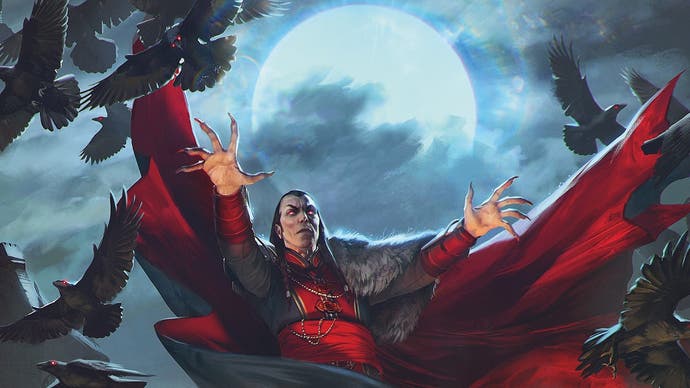What we've been playing
A few of the games that have us hooked at the moment.
27th January 2024
Hello! Welcome back to our regular feature where we write a little bit about some of the games we've been playing over the past few days. This week: vampire lords, Idris Elba, and playing with time.
If you fancy catching up on some of the older editions of What We've Been Playing, here's our archive.
Dungeons & Dragons, Curse of Strahd
Curse of Strahd is a really famous campaign in Dungeons & Dragons, but until the other day, I didn't really understand why. I knew the campaign had existed before, in an older edition of the game, and that people liked it, but I thought that was because it was dark and gothic and had vampires in. Namely, a vampire lord called Count Strahd von Zarovich, who tyrannically rules the land.
So far so predictable, right? Well, here's where the special part comes in, because what the Strahd campaign does that other campaigns don't - or at least didn't, before it - was exactly that: unpredictability. The campaign didn't lock a final boss encounter to a time and place - say at the end of the campaign at the top of a tower - but instead unshackled them and encouraged dungeon masters to play with them instead. Strahd, in other words, could - and indeed should - go walkabout, and it completely threw parties of adventurers off when he did.
This happened to us the other night. It's not the first time we've come across Strahd, by the way: we had a hairy moment once before, when he nearly killed us, before dramatically galloping off through the sky on the back of his magical flying - and flaming - horse. This time, though, he came in disguise.
He knocked on the door and my gullible but ever so sociable character let him in (I don't know where I get my inspiration), which isn't the best thing you can do as far as vampires are concerned. Nevertheless, we got on famously, though his charms didn't work on all of us, so eventually, a fight broke out - a very reluctant fight on my part, I have to say. Strahd was revealed for who he really is, and it was a lovely surprise. We would go on to survive, and he'd fly away, only for us to bump into Strahd again half-way across the map somewhere else. He was, it seems, absolutely everywhere.
It's this element of the campaign that made, and makes, it so memorable. It's also this element which separates the tabletop experience of Dungeons & Dragons so clearly from the programmed, video game experience of it, because you could never have a character like Strahd spontaneously roam around a world, hounding you. Well, you could, but it would have to be predefined, making it predictable. Unless, I suppose, you gave Strahd his own AI brain like the Alien had in Alien: Isolation, and used to such great effect. Now, there's a thought...
-Bertie
Cyberpunk 2077
I finished Cyberpunk 2077 on its first week of release back in 2020, and while I didn't experience any game-breaking bugs, it did feel like it was unfinished. Enjoyable, but unfinished. Finally after the 2.0 update and Phantom Liberty expansion - and the Edge Runners anime content - the game feels like what we were supposed to get.
It was a maniacal playthrough, combining both the main story and expansion content, particularly when Idris Elba was on screen listening to his radio playlist while driving around Night City. You know? I'd play it a second time. It was fun, I promise.
-Paolo
Prince of Persia: The Lost Crown, PS5
It starts off pretty standard: mapping out the world, dashing through the air, slicing at enemies. It's fun, but we've done this before. All that's missing is the obvious double jump, which Ubisoft holds back just to troll you.
But then it picks up into something really special. Platforming feels so smooth that when challenges ramp up in difficulty it's still a joy to fail. There are creative powers and environmental hazards that add layers to your skillset and play on the game's time-travelling themes. There's a brilliant puzzle section I don't want to spoil but it could be a game in itself. The slightly cheap aesthetic expands into huge sun-kissed vistas and elaborate architecture that give the world its unique sense of place. It all culminates in, for me, the best bit: the pirate ship area in the east. I don't want to say any more, but it was incredibly cool.
At first I wasn't sure The Lost Crown could keep up with the greats of the genre - the Hollow Knights and Metroid Dreads and Symphony of the Nights - but slowly it impressed me with its creativity. And a Metroidvania is the ideal fit for Prince of Persia. A slow start, but the pacing accelerated rapidly and now I can't put it down. The game's playing with time in more ways than one.
-Ed











